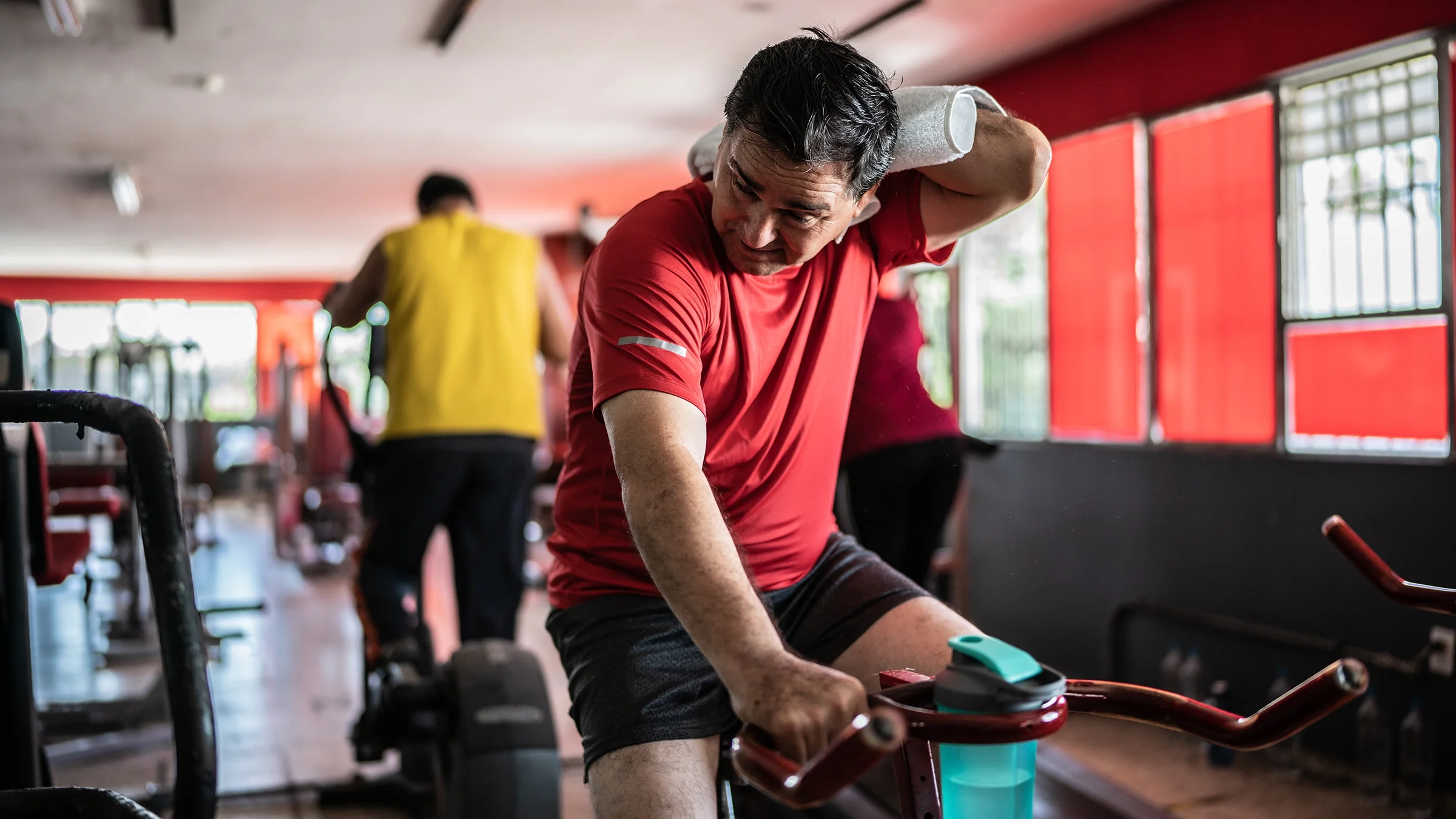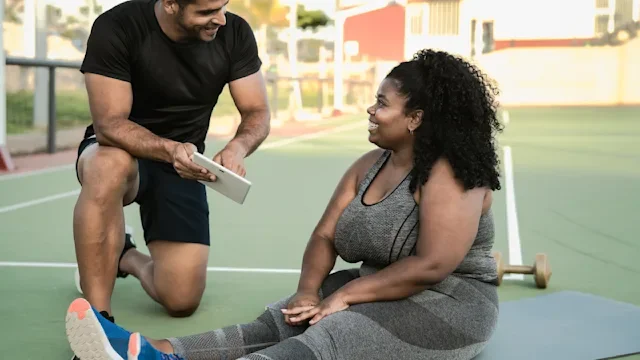Key takeaways:
Exercise may temporarily increase your blood pressure –– but only to a point. This is a natural response as your body adjusts to the demands of physical activity.
Your blood pressure should start to come down a few minutes after you finish exercising. Experts recommend waiting 30 minutes after exercise before taking your blood pressure.
Abnormal blood pressure during or after exercise may be a sign of hypertension or other conditions. Seek medical attention if your blood pressure gets too high or rises too quickly and stays elevated for hours after exercise.
Regular exercise is a great way to prevent or treat high blood pressure (hypertension). In fact, it is one of the safest ways to lower your blood pressure over time. But you might experience a modest blood pressure spike during and shortly after exercise. So, how long is blood pressure elevated after exercise? It depends. Here's what you need to know about how exercise affects blood pressure.
How does exercise affect blood pressure?
First, let's define blood pressure. Every time your heart beats, blood pumps through your blood vessels (arteries). This puts pressure on your blood vessel walls. Your blood pressure measures the force of your blood as it pushes against those artery walls. There are two measures of blood pressure:
Systolic blood pressure is the top number of a blood pressure reading. It measures blood pressure as your heart beats.
Diastolic blood pressure is the bottom number. It measures blood pressure during the rest phase between heartbeats.
Search and compare options
According to the American Heart Association, these are the readings for normal and high blood pressure (hypertension):
Normal: Under 120/80 mmHg
High: 130/80 mmHg or higher
When you exercise, your heart beats harder and faster to pump more oxygen-rich blood to your muscles. Your blood vessels expand to accommodate the increased circulation. But blood vessels can only stretch so much. So your systolic blood pressure rises when arteries can't expand any further. A brief, modest increase in systolic blood pressure after exercise is not usually cause for concern. Diastolic blood pressure typically stays about the same.
Over time, regular exercise strengthens the heart, allowing blood to pump more efficiently. That's why it helps lower blood pressure in people with and without high blood pressure.
How long is your blood pressure elevated after exercise?
Research suggests that blood pressure should return to resting levels within 6 minutes after exercise. And experts recommend waiting at least 30 minutes after exercise before taking your blood pressure.
But the time it takes your blood pressure to recover from exercise depends on several factors. These include your age, exercise intensity, and cardiovascular fitness. In one study, researchers tested systolic blood pressure recovery after exercise. They found that systolic blood pressure returned to baseline faster in younger adults.
Read more like this
Explore these related articles, suggested for readers like you.
So, it could take longer for your blood pressure to come down. Blood pressure can also drop below baseline for several hours after exercise. This post-exercise hypotension (low blood pressure) may be another reason regular exercise helps maintain a healthy blood pressure.
Talk to your healthcare professional if your blood pressure is elevated for several hours after exercise. Delayed recovery after exercise may indicate high blood pressure or other underlying conditions.
How much should your blood pressure go up during exercise?
Typically, the harder you exercise, the more your blood pressure will increase. But this spike should eventually level out to a maximum with peak exercise intensity.
According to experts, systolic blood pressure may increase by 10 mmHg per metabolic equivalent of tasks (METs). A MET is how much energy your body uses during various activities. Health and fitness professionals often use METs to measure exercise intensity. For example, you use one MET while sitting.
Experts don't agree on how to define abnormally high blood pressure during or after exercise. Some define this hypertensive response as follows:
Males: A systolic increase of 60 mmHg or more
Females: A systolic increase of 50 mmHg or more
Remember, these are estimates. How much your blood pressure goes up during and after exercise also depends on other factors, such as:
Age
Health conditions
Medications you take
Lifestyle habits
Can you have low blood pressure after exercise?
Yes. Some people experience a modest drop in blood pressure after exercise. During a workout, your muscles contract, helping blood flow back to the heart. When you finish exercising, blood can pool in the lower extremities as circulation slows. This may cause low blood pressure after exercise (post-exercise hypotension).
A slight drop in blood pressure after exercise is not usually cause for alarm. As with high blood pressure after exercise, the numbers are difficult to define. Some experts suggest that hypotension occurs when systolic blood pressure decreases by more than 10 mmHg as exercise intensity increases.
Consult a healthcare professional if you have symptoms of low blood pressure during exercise, such as:
Fainting
Dizziness
Confusion
Blurred vision
Nausea
Fatigue
Low blood pressure during exercise has been linked to heart conditions such as coronary artery disease. Conditions that affect the nervous system –– such as multiple sclerosis, diabetic neuropathy, or spinal cord injury –– can also cause low blood pressure during exercise.
When should you be concerned about elevated blood pressure after exercise?
The AHA suggests taking your blood pressure at least 30 minutes after exercise, and not before. If your blood pressure is 180/120 mmHg or higher, and you have any of the following symptoms, seek emergency medical treatment right away:
Shortness of breath
Chest pain
Back pain
Numbness or weakness
Vision changes
Trouble speaking
If your blood pressure is 180/120 mmHg or higher but you don't have any symptoms, wait 5 minutes and take another reading. If the second reading is still high, talk to a healthcare professional as soon as you can. Exercise-induced high blood pressure may increase the risk of cardiovascular disease and mortality. An AHA study showed that abnormally high blood pressure and delayed recovery after exercise could signal future heart disease and high blood pressure.
Usually, there are no symptoms of high blood pressure. That's why it's so important to check your blood pressure regularly. If high blood pressure goes untreated, it can lead to several medical conditions, including stroke, heart conditions, eye problems, and kidney failure. If you have any symptoms of stroke, heart failure, heart attack, or kidney failure, it is important to seek medical attention right away.
The bottom line
While it is normal for blood pressure to increase during exercise, it shouldn't get too high. And it should start to come down a few minutes after exercising.
But if your blood pressure gets too high –– or low –– during exercise and stays that way for hours after you finish, it could be a sign of other health problems. Talk to a healthcare professional about your blood pressure right away. Seek emergency medical treatment if you have symptoms of dangerously high or low blood pressure while exercising. These include shortness of breath, blurred vision, or fainting.
Regular exercise is critical for your health and fitness. But it's important to create a routine that works for you.
References
American Heart Association. (2022). How high blood pressure can lead to vision loss.
American Heart Association. (2023). Heart failure signs and symptoms.
American Heart Association. (2023). Hypertensive crisis: When you should call 911 for high blood pressure.
American Heart Association. (2023). Low blood pressure - when blood pressure is too low.
American Heart Association. (2023). Monitoring your blood pressure at home.
American Heart Association. (2023). Understanding blood pressure readings.
Börjesson, M., et al. (2016). Physical activity and exercise lower blood pressure in individuals with hypertension: Narrative review of 27 RCTs. British Journal of Sports Medicine.
Carpio-Rivera, E., et al. (2016). Acute effects of exercise on blood pressure: A meta-analytic investigation. Arquivos Brasileiros de Cardiologia.
Centers for Disease Control and Prevention. (2021). High blood pressure symptoms and causes.
Centers for Disease Control and Prevention. (2022). Stroke signs and symptoms.
Centers for Disease Control and Prevention. (2024). Measure your blood pressure.
Chen, C.-Y., et al. (2010). Postexercise hypotension: Central mechanisms. Exercise and Sport Sciences Reviews.
Dimpka, U., et al. (2008). Age-related differences in systolic blood pressure recovery after a maximal-effort exercise test in non-athletic adults. International Journal of Exercise Science.
Endo, M. Y., et al. (2023). Calf venous compliance during hypotension after an acute bout of aerobic exercise in humans. Journal of Science in Sport and Exercise.
InformedHealth.org. (2019). What is blood pressure and how is it measured?
Joyner, M. J., et al. (2015). Regulation of increased blood flow (hyperemia) to muscles during exercise: A hierarchy of competing physiological needs. Physiological Reviews.
Kasper, M. J., et al. (2022). Measurement and interpretation of blood pressure for the exercise professional. ACSM’s Health & Fitness Journal.
Kim, D., et al. (2016). Hypertensive response to exercise: Mechanisms and clinical implication. Clinical Hypertension.
Laukkanen, J. A., et al. (2011). Blood pressure responses during exercise testing—is up best for prognosis? Annals of Medicine.
Lee, J., et al. (2020). Association of blood pressure responses to submaximal exercise in midlife with the incidence of cardiovascular outcomes and all‐cause mortality: The Framingham Heart Study. Journal of the American Heart Association.
Low, D. A., et al. (2012). Exercise-induced hypotension in autonomic disorders. Autonomic Neuroscience: Basic & Clinical.
De Almeida Mendes, M., et al. (2018). Metabolic equivalent of task (METs) thresholds as an indicator of physical activity intensity. PLOS One.
Mohammed, L. M., et al. (2020). Exercise-induced hypertension in healthy individuals and athletes: Is it an alarming sign? Cureus.
National Institute of Diabetes and Digestive and Kidney Diseases. (2018). What is kidney failure? National Institutes of Health.
Pesova, P., et al. (2023). Exercise-induced blood pressure dynamics: Insights from the general population and the athletic cohort. Journal of Cardiovascular Development and Disease.
Pinckard, K., et al. (2019). Effects of exercise to improve cardiovascular health. Frontiers in Cardiovascular Medicine.
Romero, S. A., et al. (2017). The cardiovascular system after exercise. Journal of Applied Physiology.
Sarelius, I., et al. (2010). Control of muscle blood flow during exercise: Local factors and integrative mechanisms. Acta Physiologica.
Schultz, M. G., et al. (2017). Blood pressure response to exercise and cardiovascular disease. Current Hypertension Reports.
Sharman, J. E., et al. (2014). Exercise blood pressure: Clinical relevance and correct measurement. Journal of Human Hypertension.
UCDavis Health. (n.d.). Blood pressure.
Van de Vegte, Y. J., et al. (2019). Genetics and the heart rate response to exercise. Cellular and Molecular Life Sciences.

Why trust our experts?





















